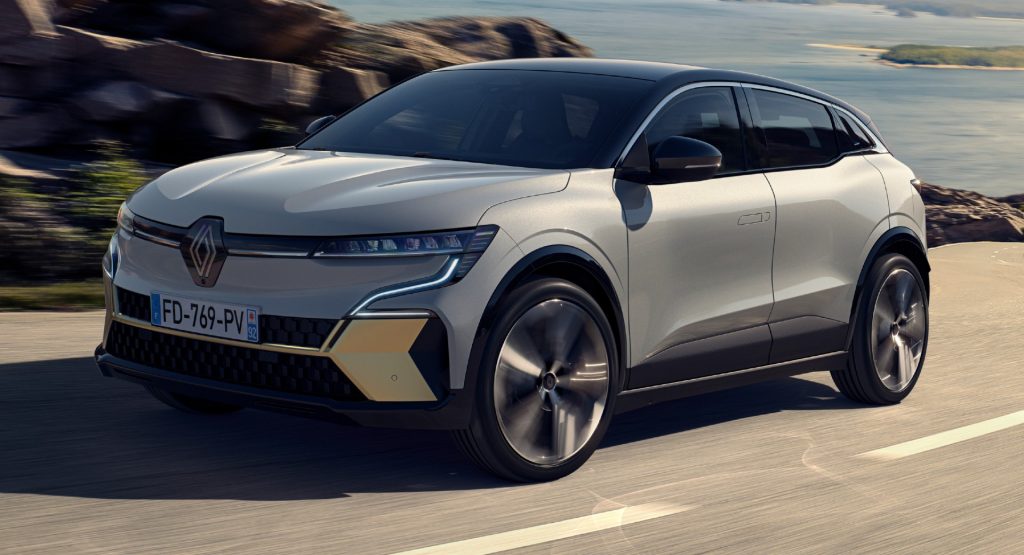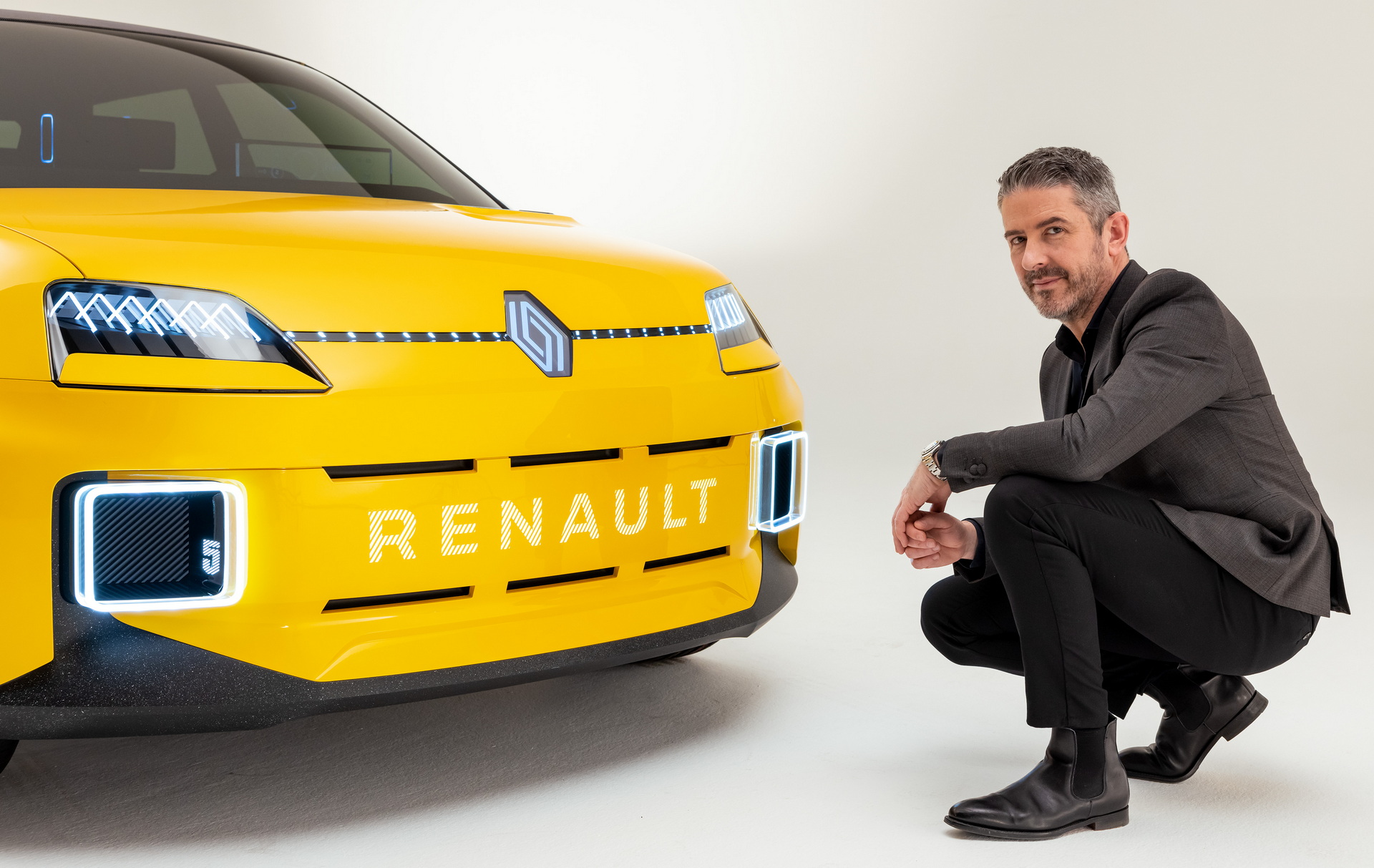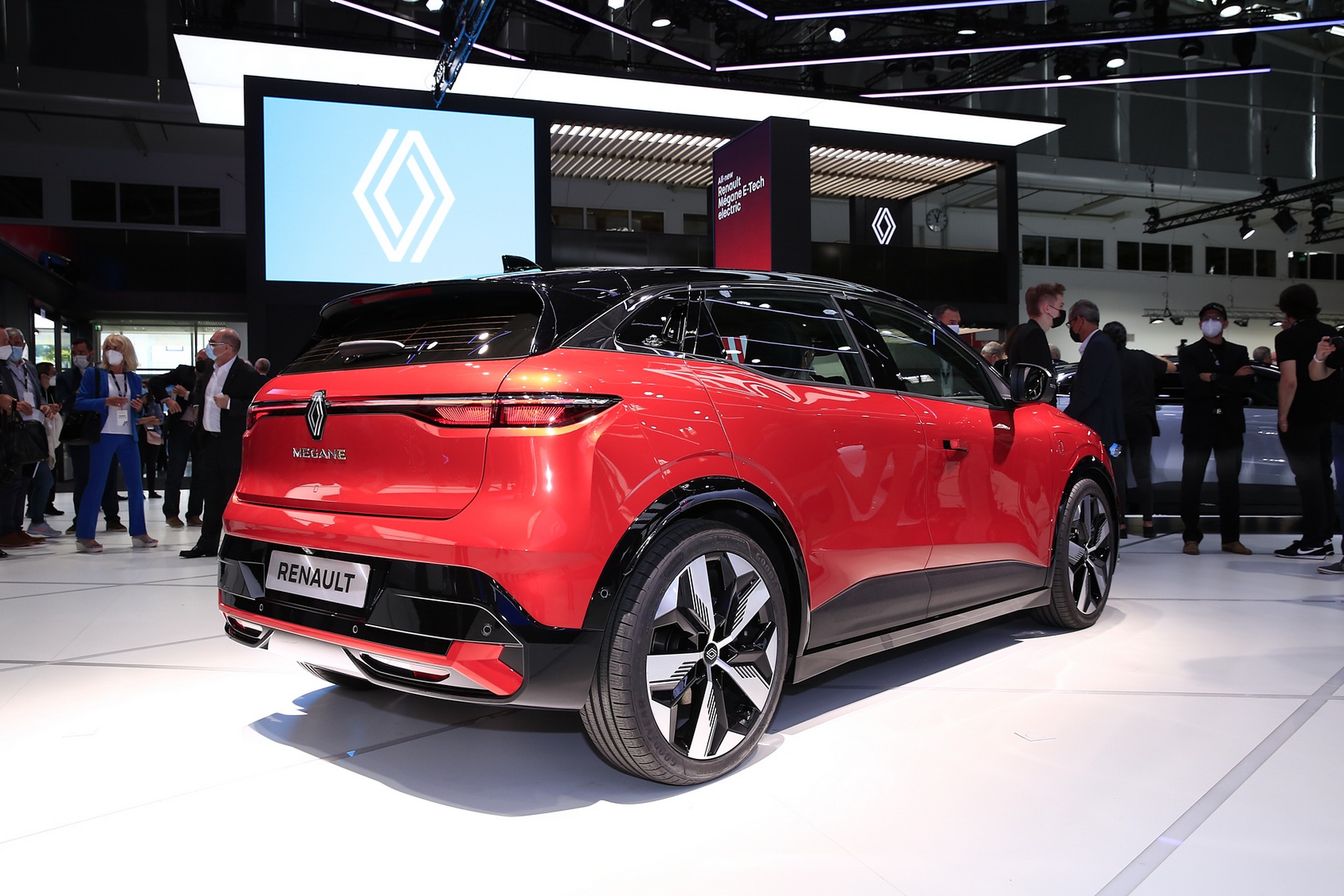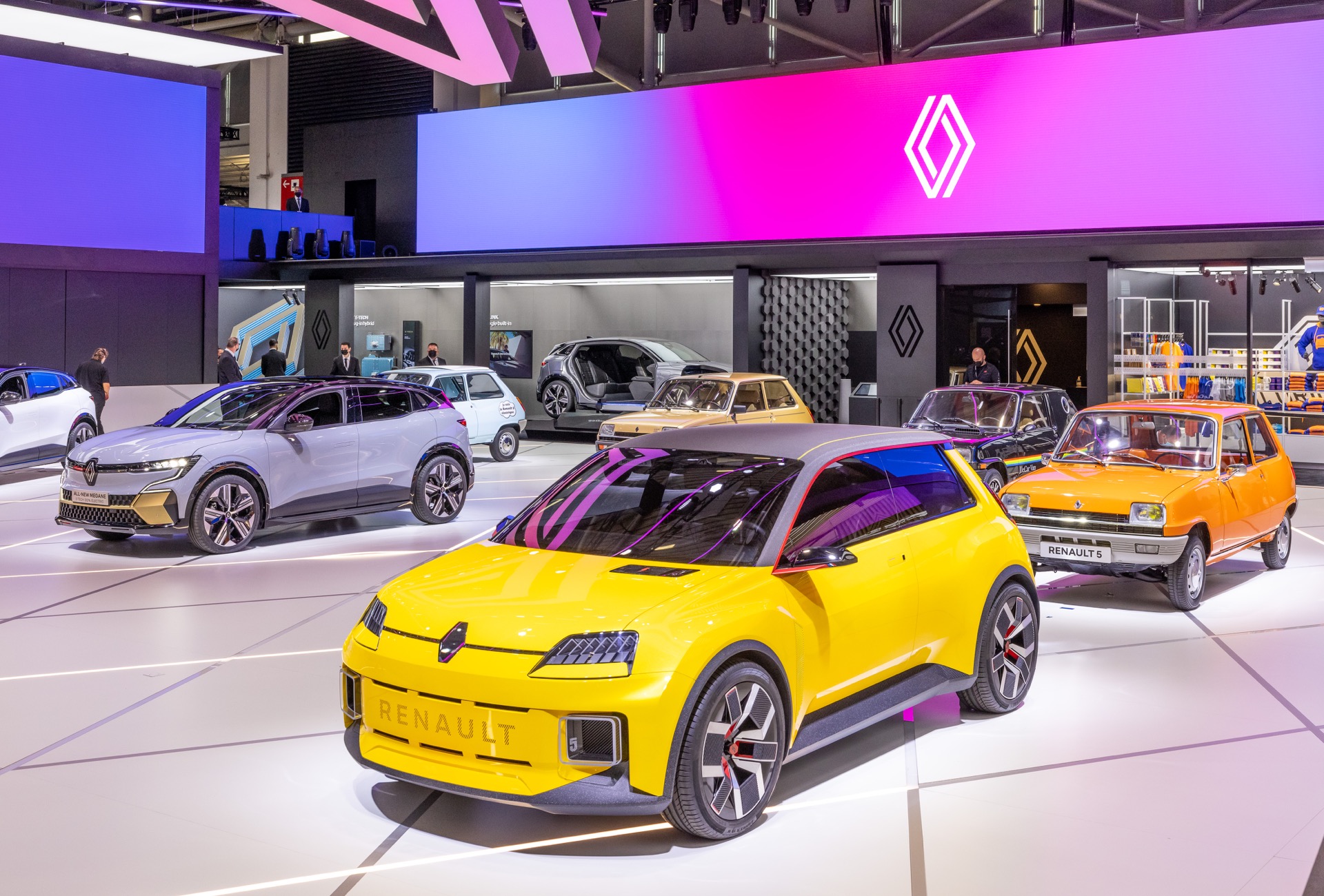Renault isn’t just entering the age of electrification with the Megane E-Tech Electric, Renault 5 and Renault 4, but it is also embarking on a new design direction.
Since 2009, Laurens van den Acker has been leading Renault Group design and was instrumental in defining the brand’s styling language. Industry veteran Gilles Vidal was appointed Renault’s new design director in 2020 and during a recent interview, van den Acker said vehicles like the Megane E-Tech will define the brand and mark a middle-point between his design direction and that of Vidal.
Read More: 2022 Renault Mégane E-Tech Unveiled As A Fully Electric Compact Crossover
“Megane E-Tech for me is more than just a vehicle. It’s also a symbol of the Renaulution plan, for the intent and the vision of the company, because it’s a full-electric car without compromise,” he told Auto News. “And I thought it was very brave of Luca [de Meo] to call it the Megane, because by doing that you show there is no way back [to internal combustion]. It’s the heart of our lineup. It’s a very important car because for Renault to be able to sell electric vehicles, they will be more expensive. We need to upgrade the design, the finish and the quality, and give it enough substance in terms of technology and sensations that [the higher price] really is justified.”
“Design wise, it’s in the middle, because it’s the vehicle that is at the end of my reign at Renault design and the start of Gilles Vidal’s. You can already see the influence of Luca – we did a Megane show car for him, and he pushed the production car to get as close as we possibly could to the show car. And this had a really positive influence because he pushed the size of the wheels, he pushed the finishes, the colors.”
Like other car manufacturers, Renault is making the most of the flexibility that electric platforms provide. For example, the French carmaker has been able to give the Megane E-Tech a sort front overhang while still having space for the HVAC system. The presence of a small electric motor has allowed it to fit larger wheels and tires without sacrificing the turning radius, while the lack of an exhaust allows for a larger trunk and the long wheelbase provides heaps of room for occupants.
Renault will also revive two of its most famed nameplates for the electric age: the Renault 5 and Renault 4. The new Renault 5 has already been previewed as a retro-inspired hatchback that will launch in 2022, while the Renault 4 will arrive as a compact crossover later in the decade. They will not look like other Renault models and that is no accident, van den Acker explained.
“First, I do not look at these cars as a starting direction that needs to be applied to the rest of the lineup. For me, they are unique,” he said. “It’s sort of like a Ford Mustang or a Ford Bronco – you have the core lineup and then you have a Bronco and a Mustang because those are telling you stories of the past… And in this particular period where you have a risk of becoming banal, like anybody else, to be able to dive into this treasure box of icons that we have that really tell a story about the roots of the company, the brand, is a richness and an advantage that we should use. And now the idea of a Renault 5, an electric, progressive, cool city car is super attractive, and it helps us to give a flavor to the brand.”






